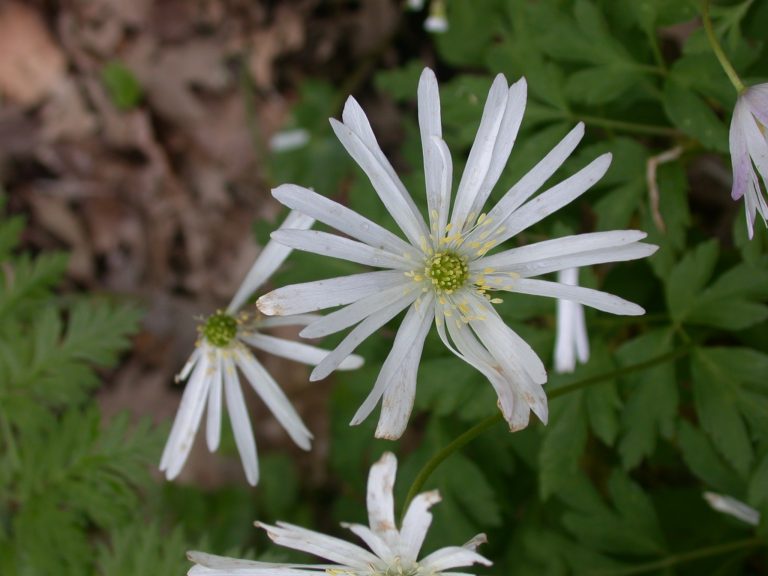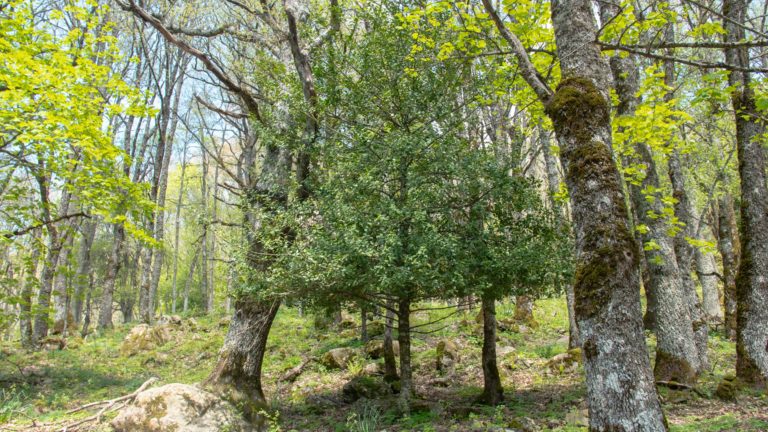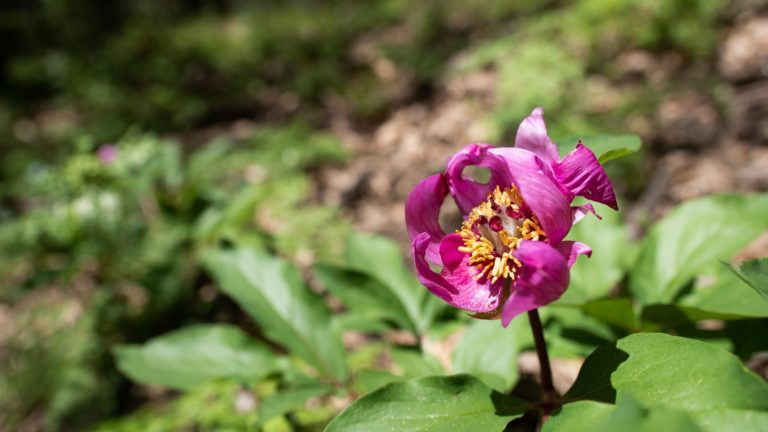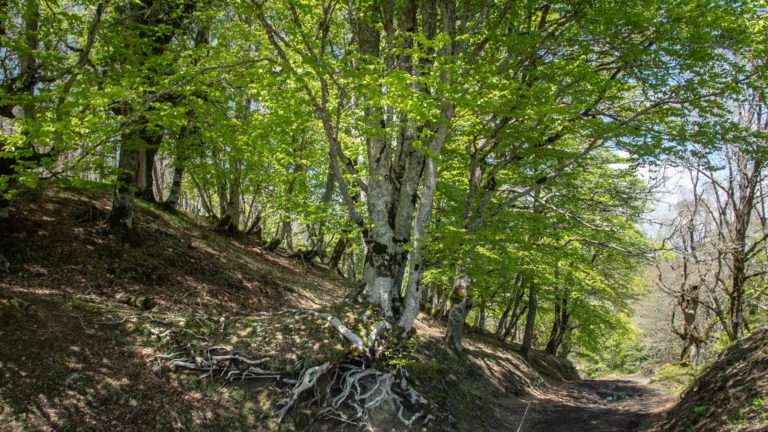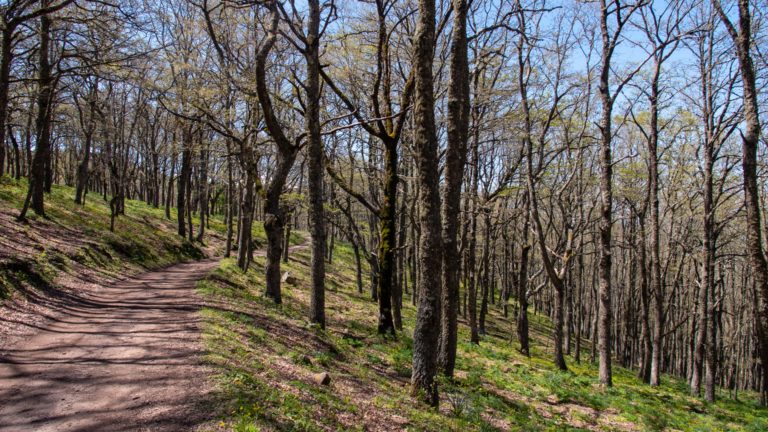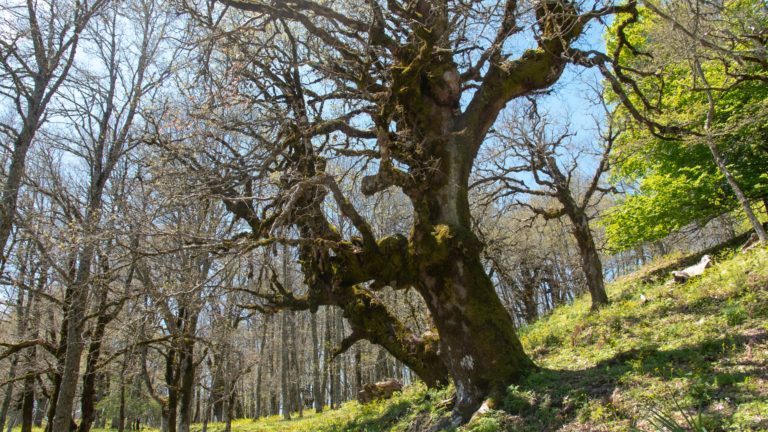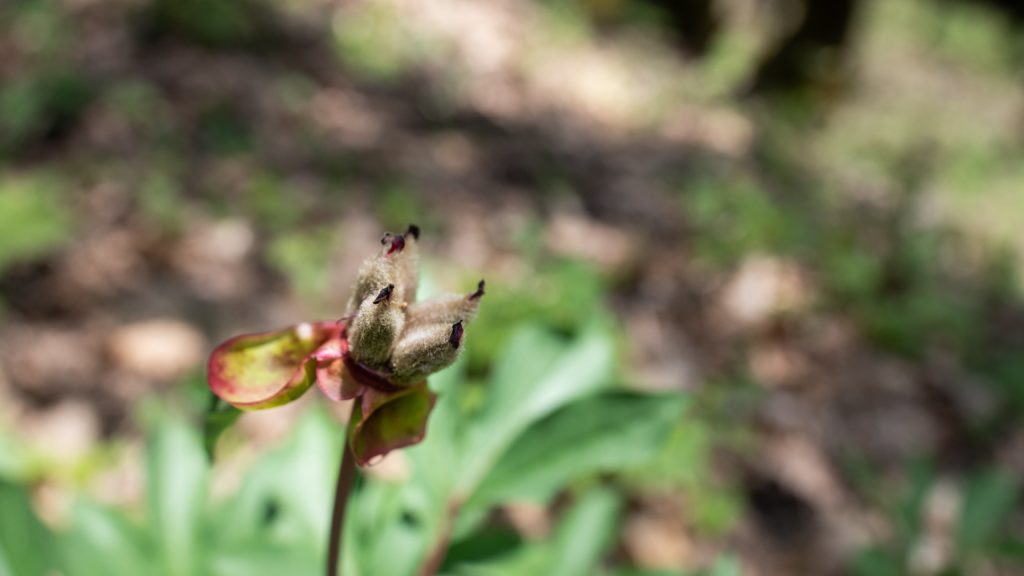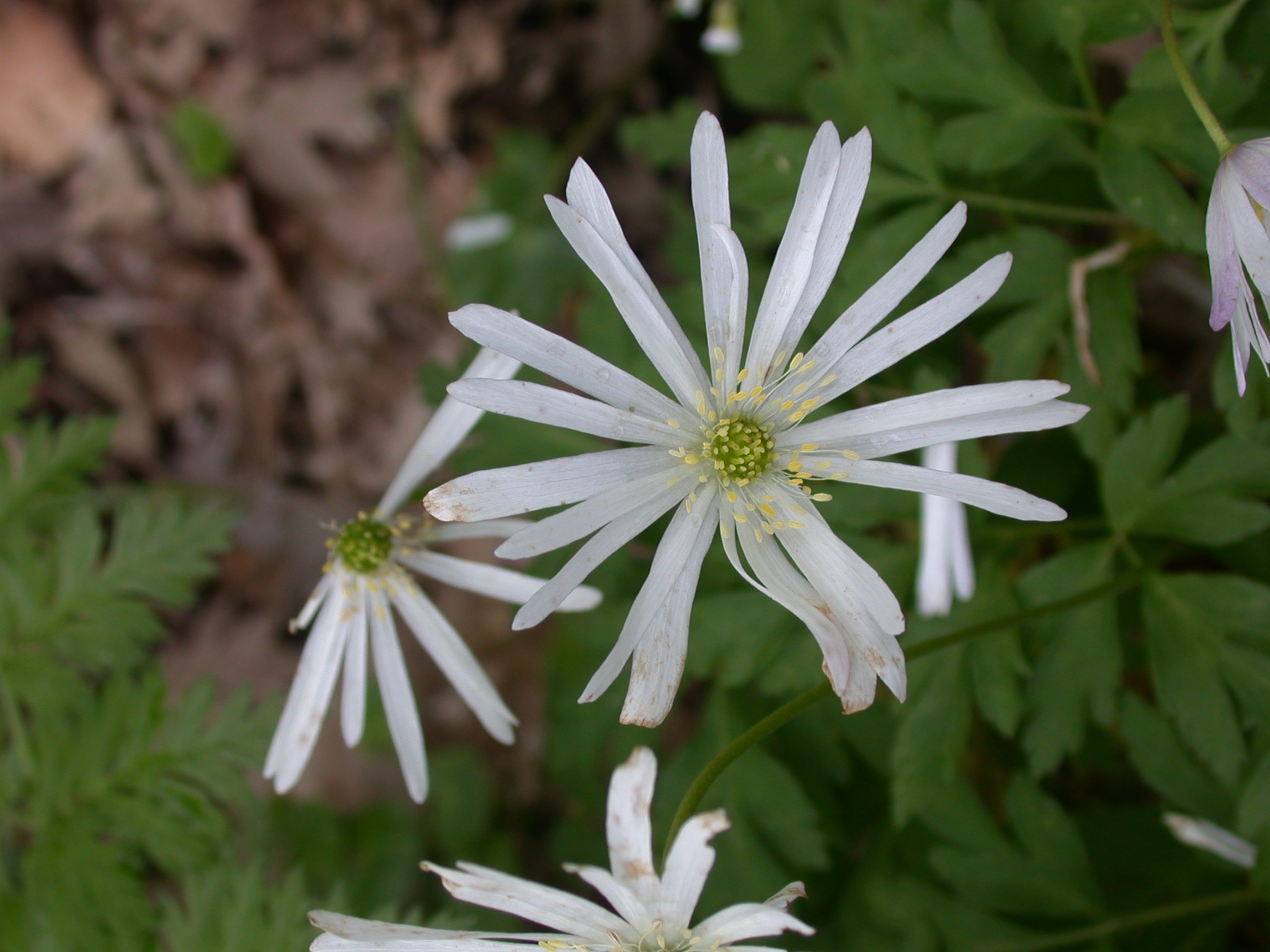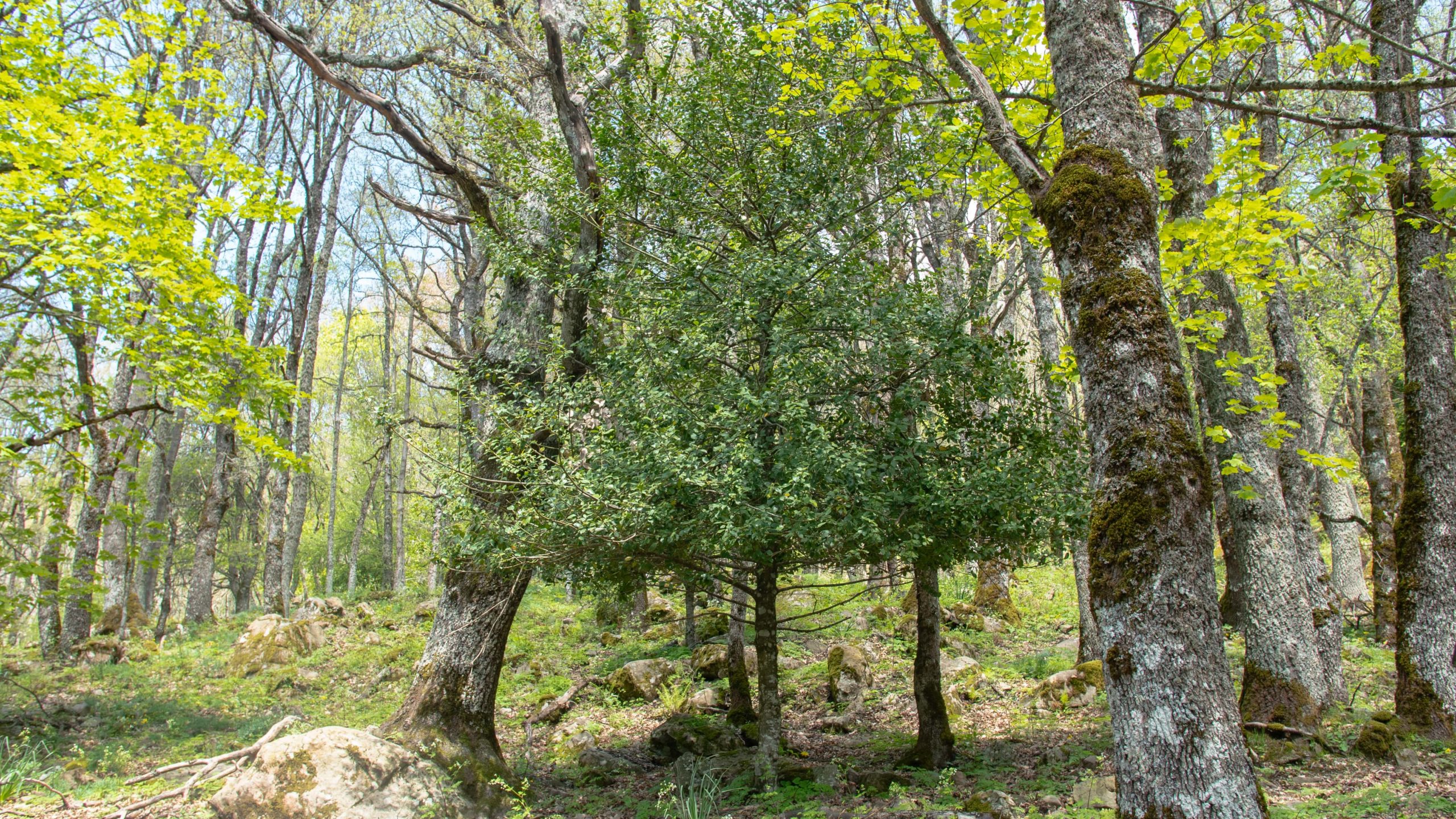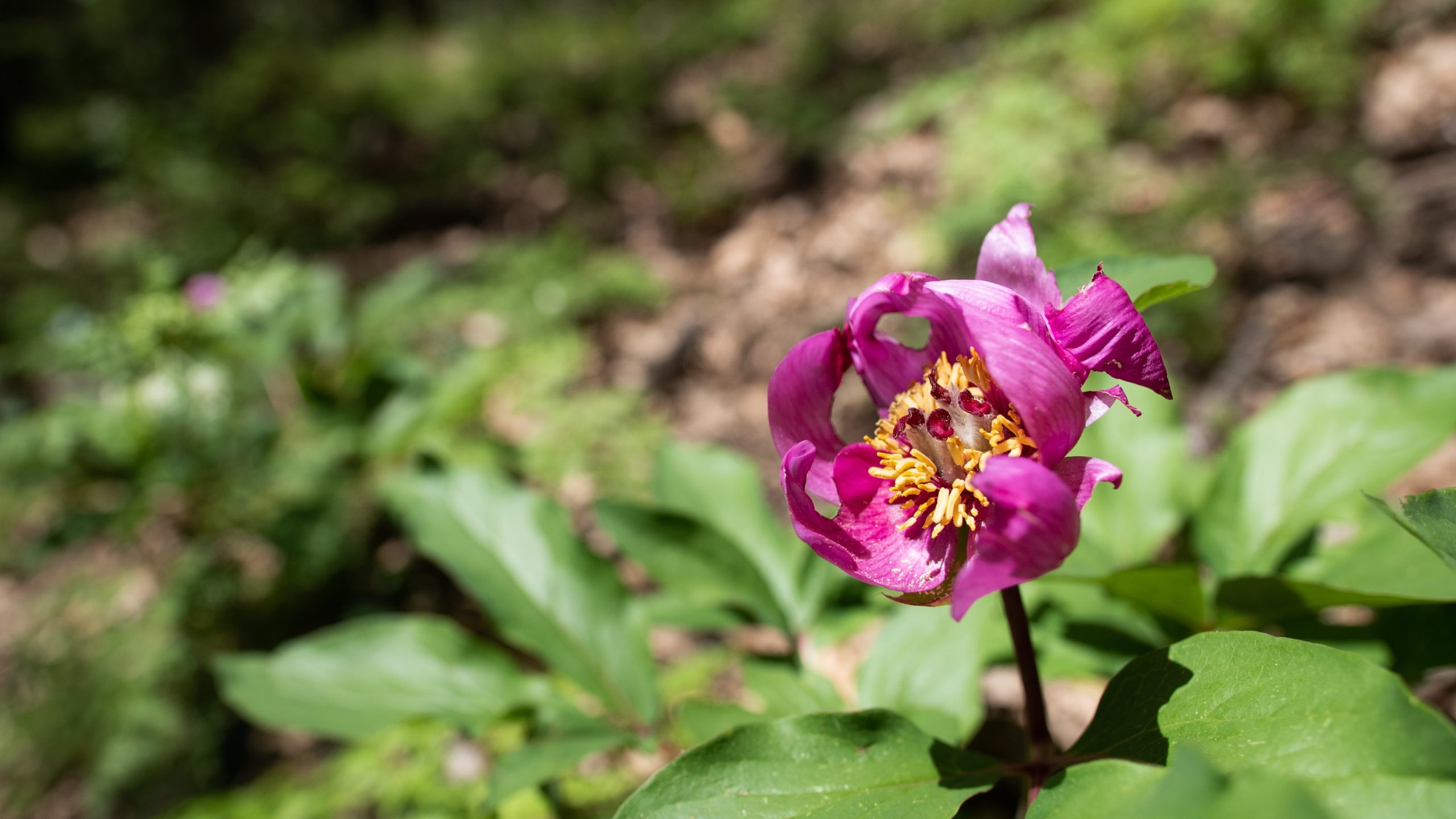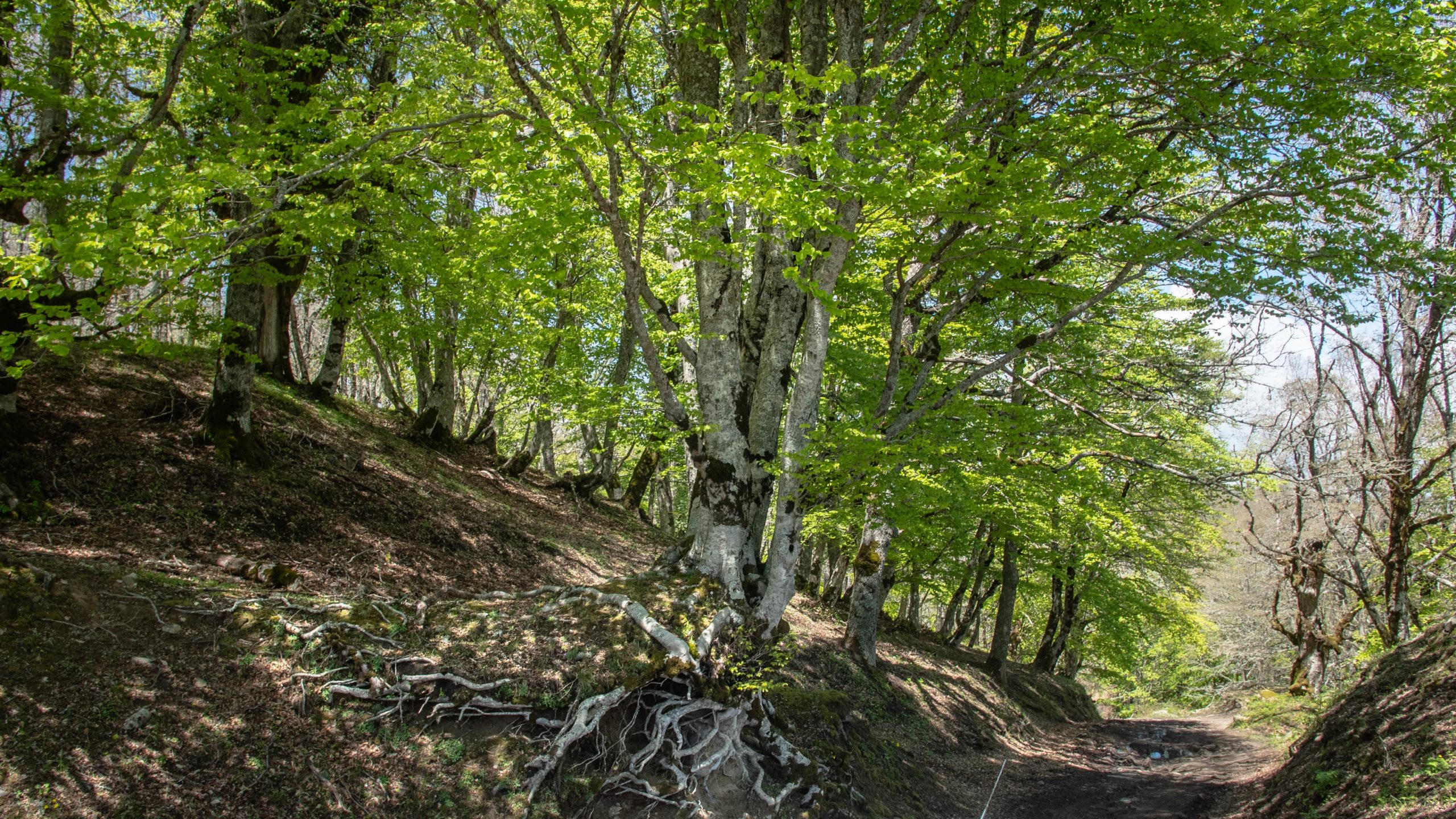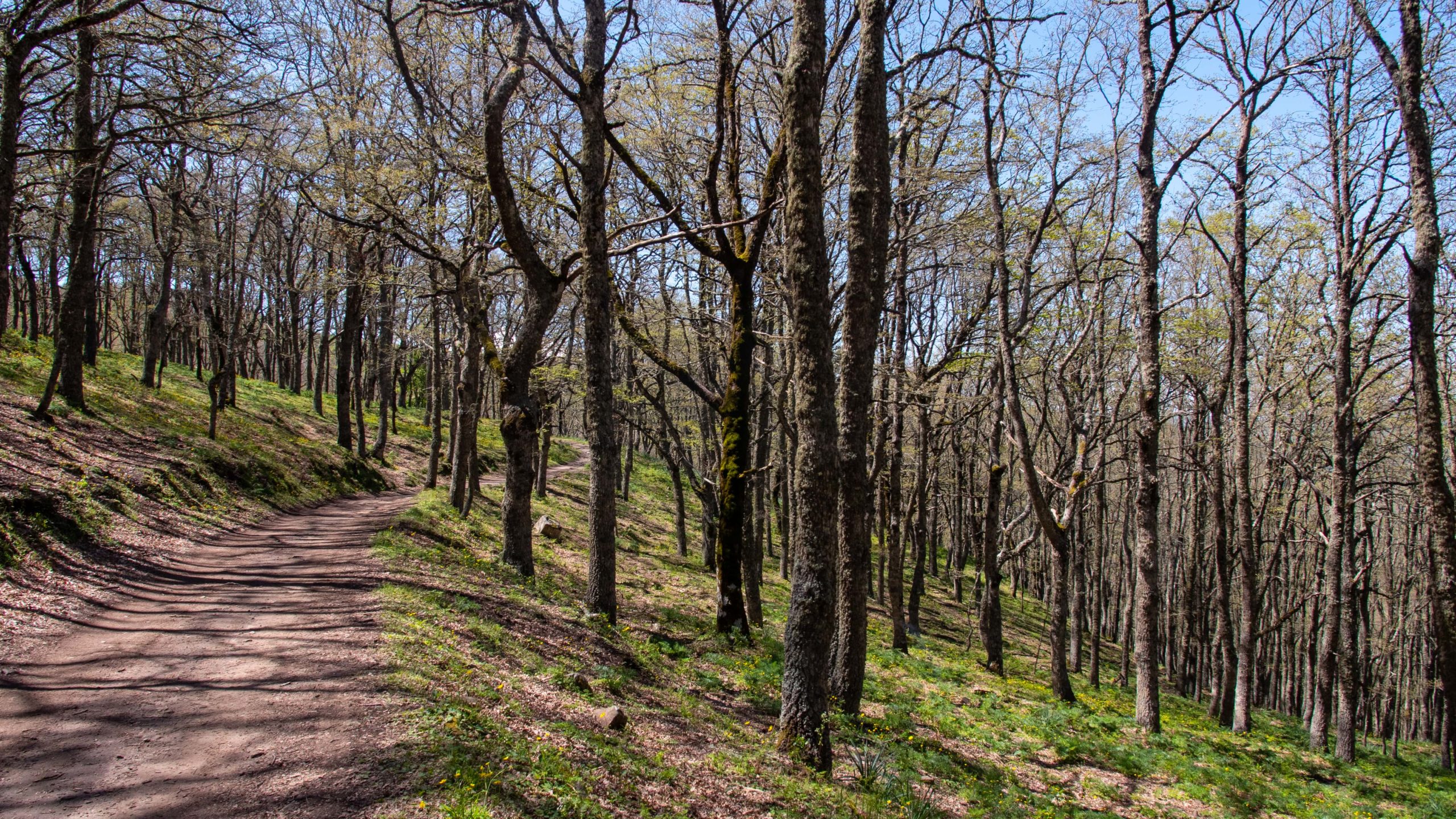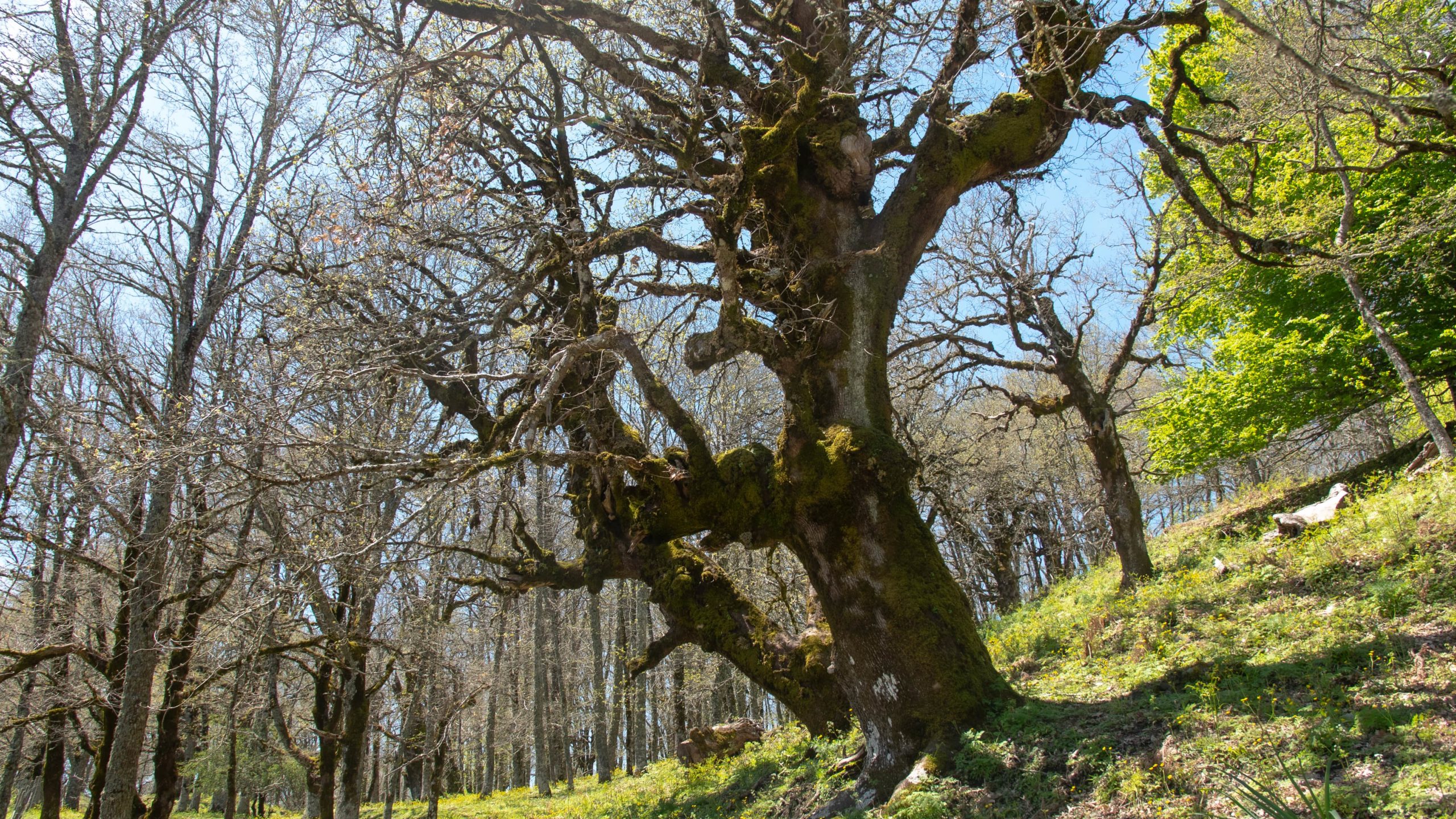Habitat, Fauna and Flora > Flora
The Reserve, in the distinct environments that follow one another between the 650/700 meters of the extreme southern limit and the 1,341 m a.s.l. of the highest peak, Monte Croce Mancina, hosts, as the altitude increases, vast and intact forests of Oaks (Holm Oak, Turkey Oak, Downy Oak) and Beech (the latter of particular geobotanical value), to which are associated Peraster, Hawthorn, Wild Rose, Citiso triflora, Spartium and, then, Chestnut, Poplar, Maple, Holly. Of particular importance are the numerous “monumental” ultracentennial specimens of Quercus pubescens (Quercus dalechampii) found in the summit portions of Monte Croce Mancina, Pizzo Voturi, Pizzo Petrolo. Significant is the flora colonizing the banks of the streams (Licopeti, Pistone and Fontanazze streams): along the banks are formations of Poplar (Populus spp.), Willow (Salix spp.), Ash (Fraxinus spp.), Maple (Acer spp.), etc.

